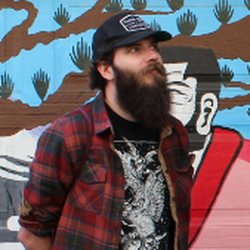About
After realizing that I should change my teenage musician slacker lifestyle to something good and productive I started my adventure into the human mind by earning a bachelor (University of Leipzig) and master (Phillips-University Marburg) degree in neurolinguistics and neuropsychology, followed by a master in cognitive & integrative systems neuroscience, as well as a PhD in cognitive & computational neuroscience (both at Phillips-University Marburg and BRAMS).
Puzzled by the question how waves are transformed into sound and perceived by the brain resulting in something incredibly powerful, I started my research path investigating the neurobiology of auditory processing as a model mechanism of complex biological behavior. Building upon the integration of computational and conceptual models, my research interests moved to generalization in biological and artificial agents and the potentially underlying transformations as a basis for intelligent adaptive behavior. I tackle these questions using MRI, EEG, behavior and artificial neural networks, with a special emphasis on data analysis approaches (e.g., pattern analyses, multimodal data integration, naturalistic paradigms, alignment methods & statistical learning) as open, transparent and reproducible as possible. Furthermore, I’m highly invested in education & outreach, fair access & utilization of knowledge, as well as responsible & sustainable science.
Starting in my masters I furthermore developed a major crush on everything related to analyses and methods within the realm of neuroinformatics, open & reproducible (neuro)science, education & outreach, fair access & utilization of knowledge, as well as responsible & sustainable science. Most of the time I’m trying to combine all of the above organizing and conducting workshops, hackathons and lectures/talks, supvervising students and trying to establishing/pushing standards across different levels (lab, institute, university, etc.) by being an active part in a versatile set of communities.
I aim to make everything I do as open and transparent as possible, no matter if research, teaching, etc. . The different aspects and respective outcomes can be found on the following platforms:
The icons used above (except Docker) come from the amazing Academicons project and are in parts licensed under SIL OFL 1.1, as well as MIT. The Docker icon is directly used from Docker’s Logos page

